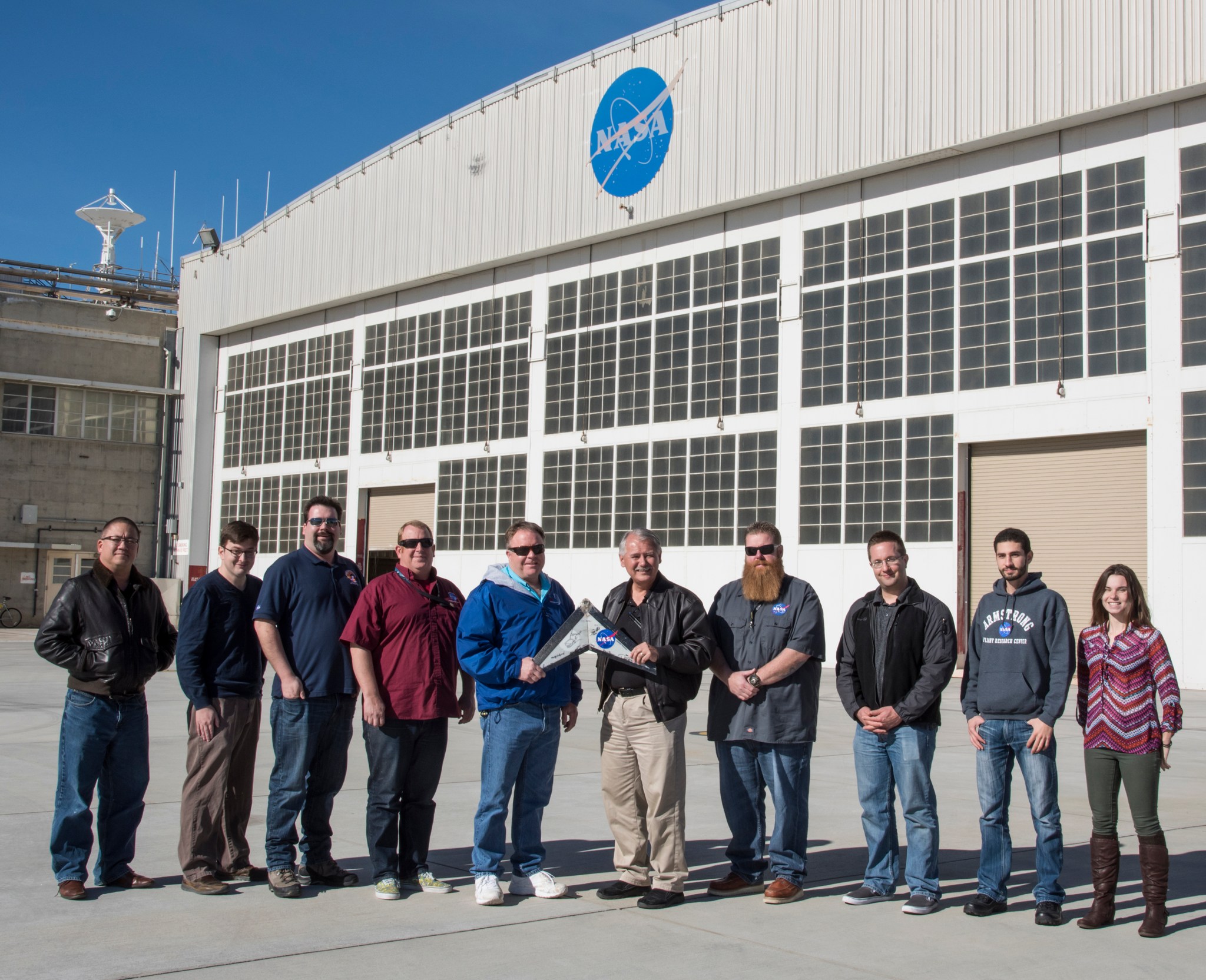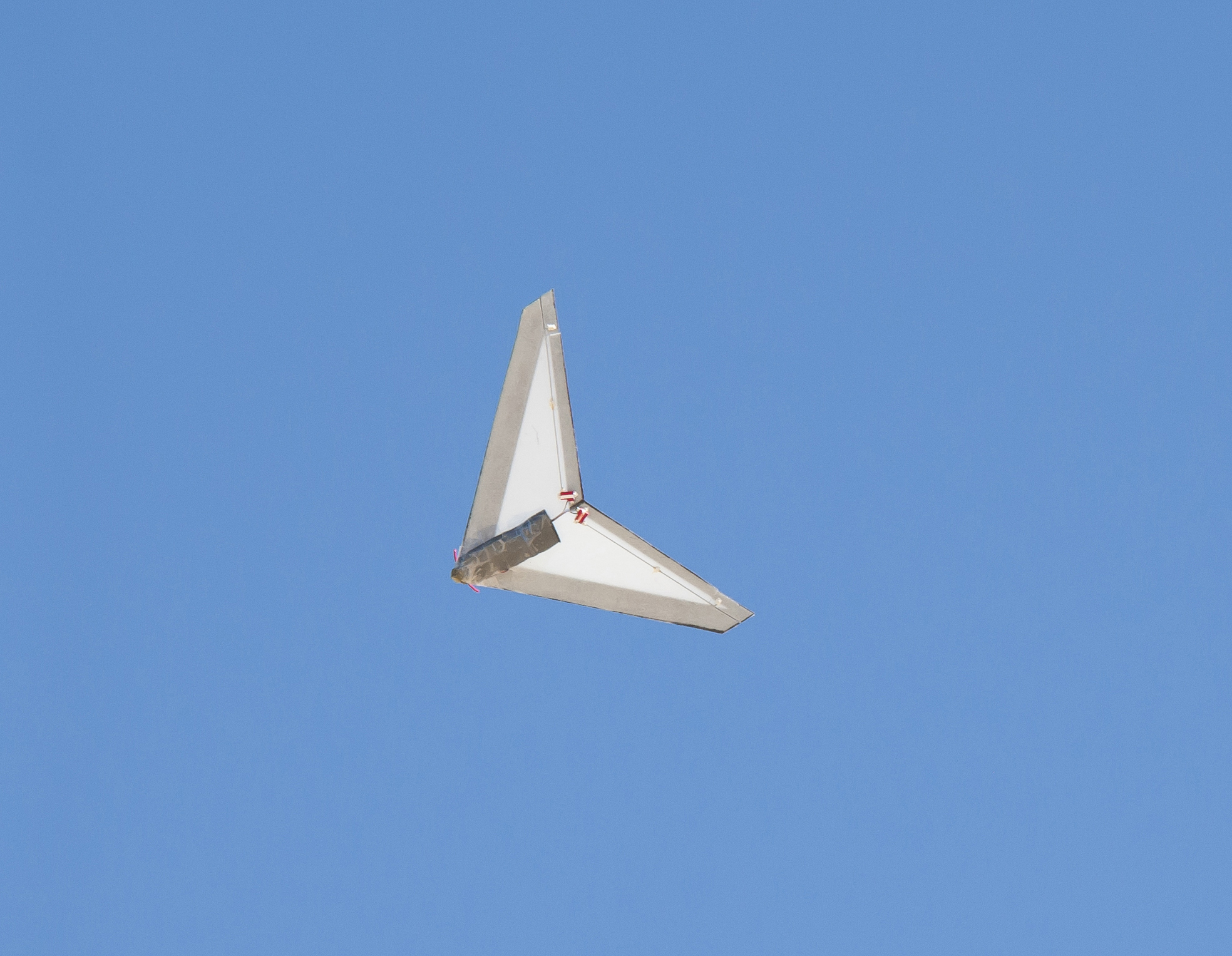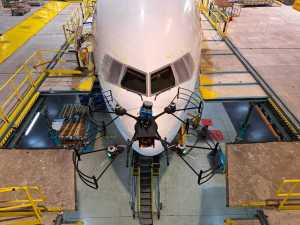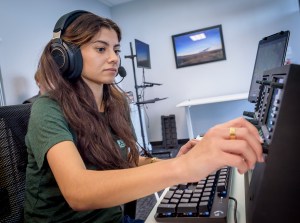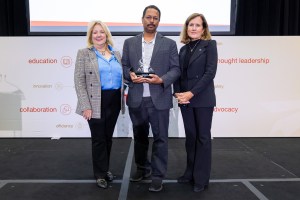More accurate, immediate and economical information on severe weather phenomenon like hurricanes could one day be available thanks to the Weather Hazard Alert and Awareness Technology Radiation Radiosonde (WHAATRR) Glider.
Students and Armstrong staff have been developing the glider based on the Prandtl-M aircraft to fly in the atmosphere of Mars. The vehicle could potentially save the National Weather Service up to $15 million a year compared to current methods and with faster and more reliable data, said project manager Scott Wiley.
Employees across the centers agree the idea could take off and voted for it during the NASA Agency Innovation Mission (AIM) Day Nov. 1 for a NASA Innovation Kick Start (NIKS) grant. Also winning a NIKS grant with Armstrong participation was the Agency Legal Enterprise Capability for Knowledge Sharing (ALECKS), the idea of a common NASA legal database including discussions, forums, news and updates.
From the 90 collaborative and visionary ideas submitted, 17 finalists were selected to present at the November event. Of those, 13 proposals were chosen by the panel of judges and agencywide votes from NASA employees to receive up to $10,000 in seed funding. Proposals were judged on innovativeness, cross-center collaboration, feasibility and relevancy, value and impact to NASA.
In addition to NASA and the National Weather Service, the WHAATRR Glider could benefit the National Oceanic and Atmospheric Administration and potentially serve as an airborne sciences platform, Wiley said. The data obtained from such gliders could reduce costs incurred from unnecessary airline delays and potentially save aircraft and lives, he added.
“It could fill a tremendous need in the weather community,” Wiley said.
Another expected contribution of such vehicles is the ability to gather research to improve weather forecast models on Earth and in space. The glider development also could bolster the goal of flying on Mars to collect atmospheric information to inform exploration decisions.
Once molds are made for the aircraft expected to have a wingspan of about 3 feet, and the double ply, carbon fiber aircraft is fabricated, one of the first tests will be an air launch from 20,000 feet from a weather balloon, Wiley explained. Simultaneously, sensors, instrumentation and flight control software and hardware will be prepared for the aircraft’s ultimate test in the early development phase – a drop from 100,000 feet altitude and remotely piloted to a predetermined destination.
The multi-center team consists of Armstrong’s Luke Bard, Scott Wiley, Al Bowers, Dave Berger, Robert “Red” Jensen, Derek Abramson and Justin Hall; NASA Goddard Space Flight Center’s Antti Pulkkinen; and NASA’s Wallops Flight Facility’s Geoff Bland.
For ALECKS, Armstrong’s Brett Swanson is co-leading the team with Donna Shafer, the deputy chief counsel at NASA’s Johnson Space Center. Shafer and Andrea Warmbier, from NASA Langley Research Center’s legal office, spearheaded the idea. The ALECKS team is comprised of representatives from each of the agency’s centers and NASA Headquarters. The ALECKS proposal ranked first in the employee vote cast across the Agency.
“NASA’s legal community has been working for some time to develop a common system for more efficient sharing of legal knowledge across the centers,” Swanson explained. “Each center’s legal office currently has its own system for tracking legal actions, storing legal documents, templates and practice manuals.”
“Although coordination of information within the NASA legal community is good, we were looking for a better way to share knowledge in real time and in one virtual location,” he said. “The ALECKS team goal is to create a common information technology resource across Agency legal offices to replace redundant processes and systems. The idea is designed for our legal community, but it could translate to other NASA organizations.”
A dedicated enterprise legal knowledge management capability will improve the quality and consistency of the legal community’s work product, capitalize on best practices, increase efficiency and attract and retain talent, Swanson added.
Author: Jay Levine, X-Press editor



























